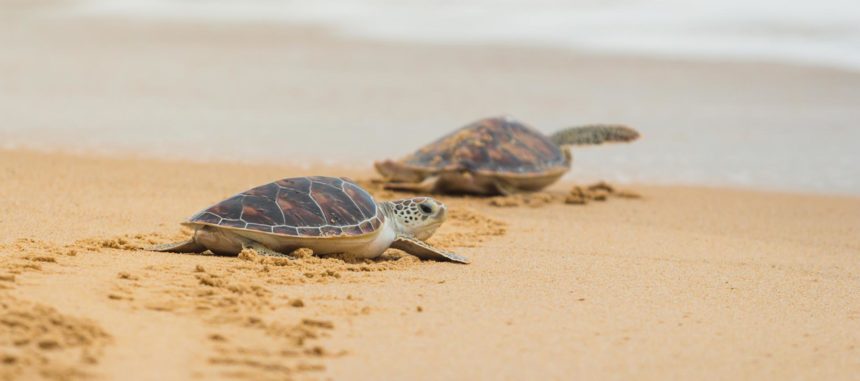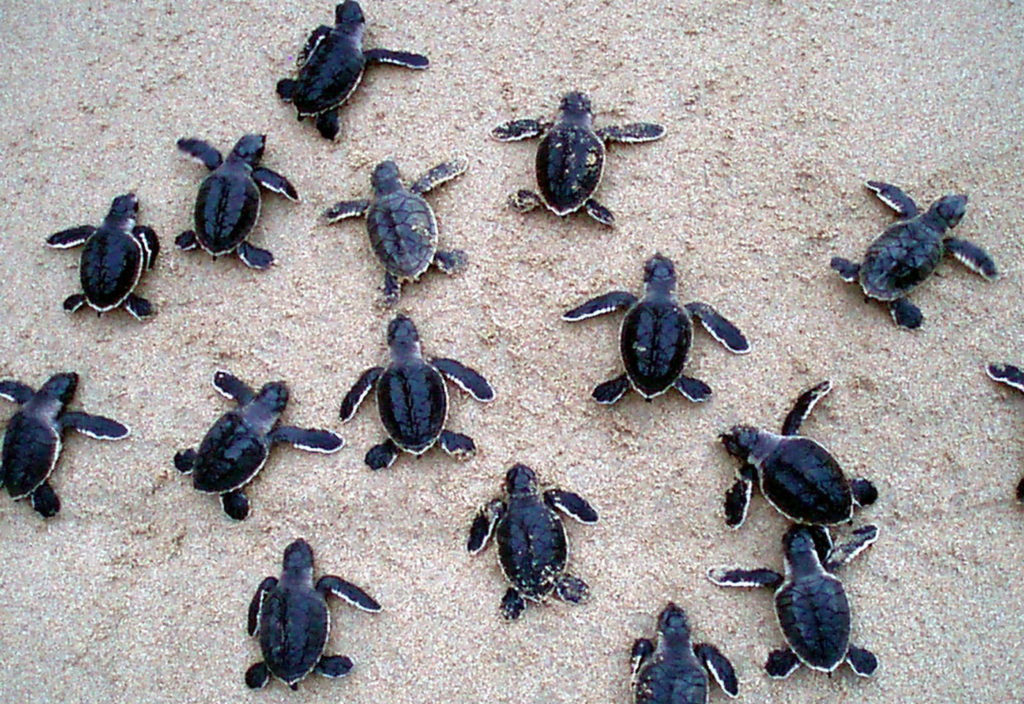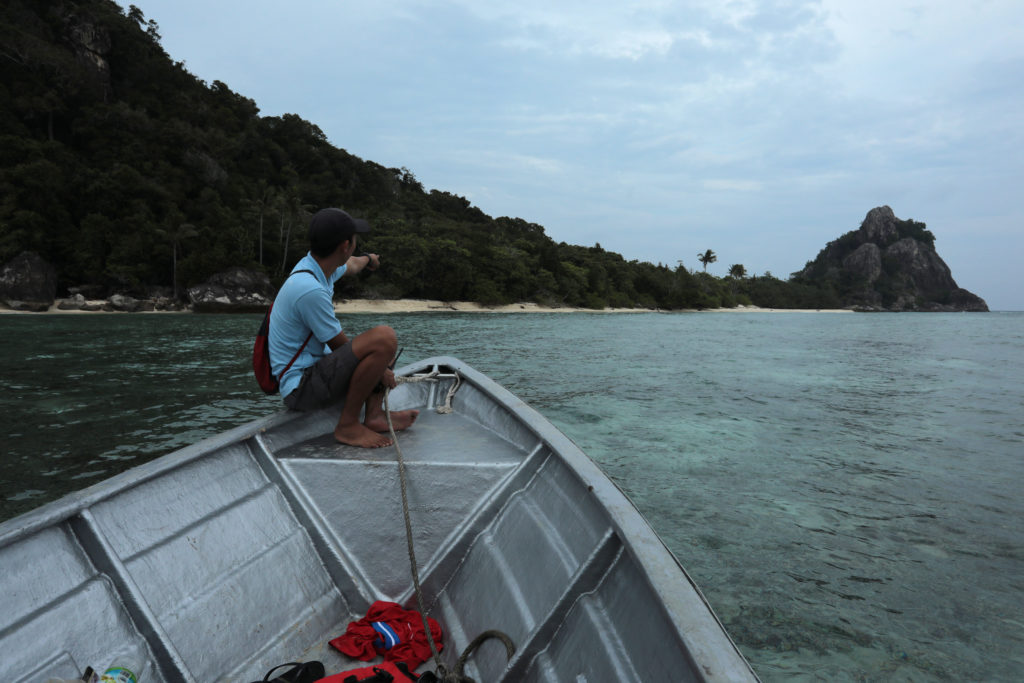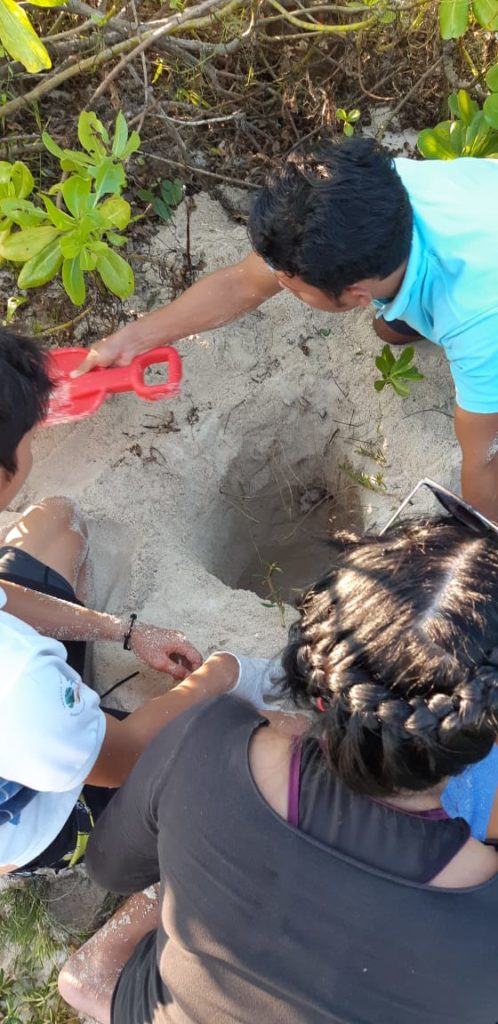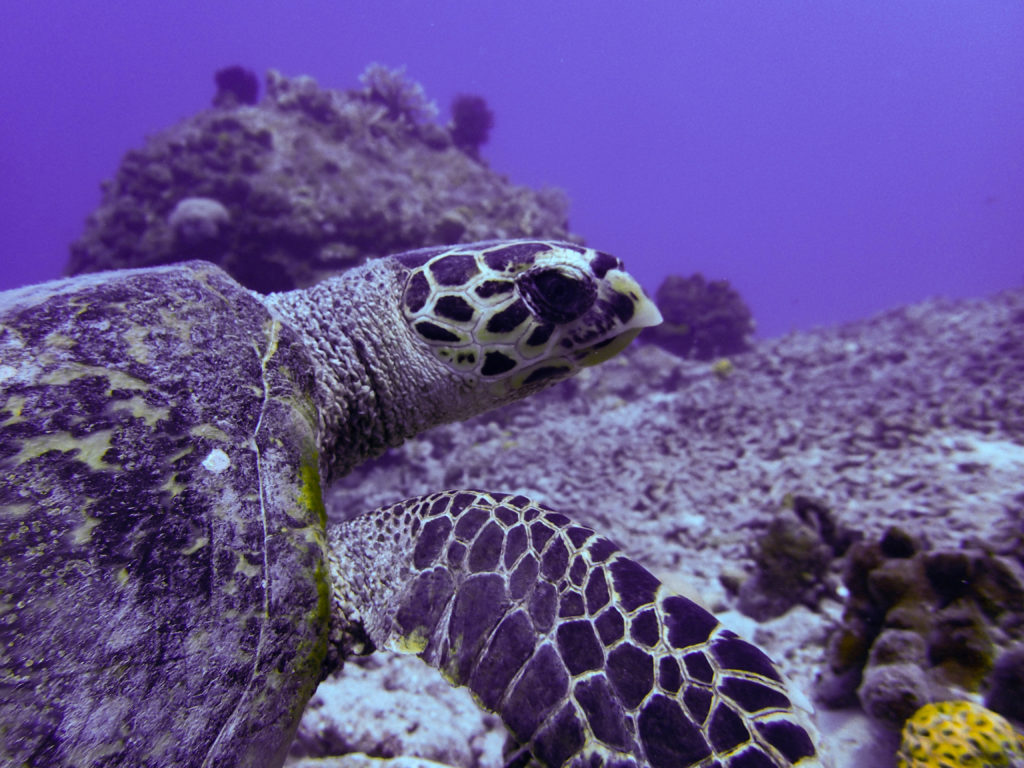There are a total of seven turtle species in the world and six of them can be found in Indonesia. Out of the six species, two reside in Bawah Island: green and hawksbill sea turtles.
You can always find these two species in their two favorite places: Turtle Beach and North East Beach. They come to these beaches almost every day for one whole year but you will see more of them during peak nesting season that is usually between the months of April and August.
What’s interesting is these pregnant sea turtles who come to these beaches are those who were born there years ago. According to research, turtles always return to their birthplace to lay their eggs; no matter how far they’ve traveled turtles know exactly how to return, that’s because they rely on earth’s magnetic fields to find the place where they were born.On average turtles can lay up to hundreds of eggs per clutch and they will hatch in 40 to 60 days’ time. However not all of them will become baby turtles as these nests are highly at risk for predation, and even if they successfully come out of their eggshells they are still faced with many threats from other animals like large lizards, fish and birds. It is estimated that only one out of thousands of turtles can reach adulthood.
Turtle population in the world is constantly declining due to predation, habitat destruction and human activities. They are slaughtered for their eggs, meat, skin and shells and face accidental capture. According to WWF, almost all species of sea turtle are now classified as endangered with three of them listed as critically endangered.
In Indonesia, the government has released Government Regulation No. 7 year 1999 regarding plants and animals conservation which includes protection for the six turtle species in the country. Meanwhile as a way to prevent further decline of turtle population in Anambas, we have included turtle conservation in our marine conservation program.
We have a team that routinely patrols the area around Bawah Island to oversee turtles’ activities, especially during nesting season.
The biggest natural threat for turtle eggs in Turtle Beach and North East Beach is monitor lizards or biawak; they have strong instinct in spotting a turtle nest and move rather quickly. What we do to shoo them away is apart from constantly monitoring the area, we also build a bamboo fence circling the turtle nest, making it hard for them to snatch those eggs.
Our other conservation activity is turtle-ID identification where we identify every individual turtle that we encounter while snorkeling or diving.
How do we do it? Just like a human’s fingerprint, turtles also have different scales patterns that are visible from both sides of their heads and we use those special characteristics to differentiate them.
Turtles that have been identified are put into a database and we continuously monitor their development.
References:
1 CNRS. (2007, March 8). How Do Marine Turtles Return To The Same Beach To Lay Their Eggs?. ScienceDaily. Retrieved June 25, 2020 from www.sciencedaily.com/releases/2007/02/070226131640.htm
2 Frazer, N. (1986). Survival from Egg to Adulthood in a Declining Population of Loggerhead Turtles, Caretta caretta. Herpetologica, 42(1), 47-55. Retrieved June 26, 2020, from www.jstor.org/stable/3892233

